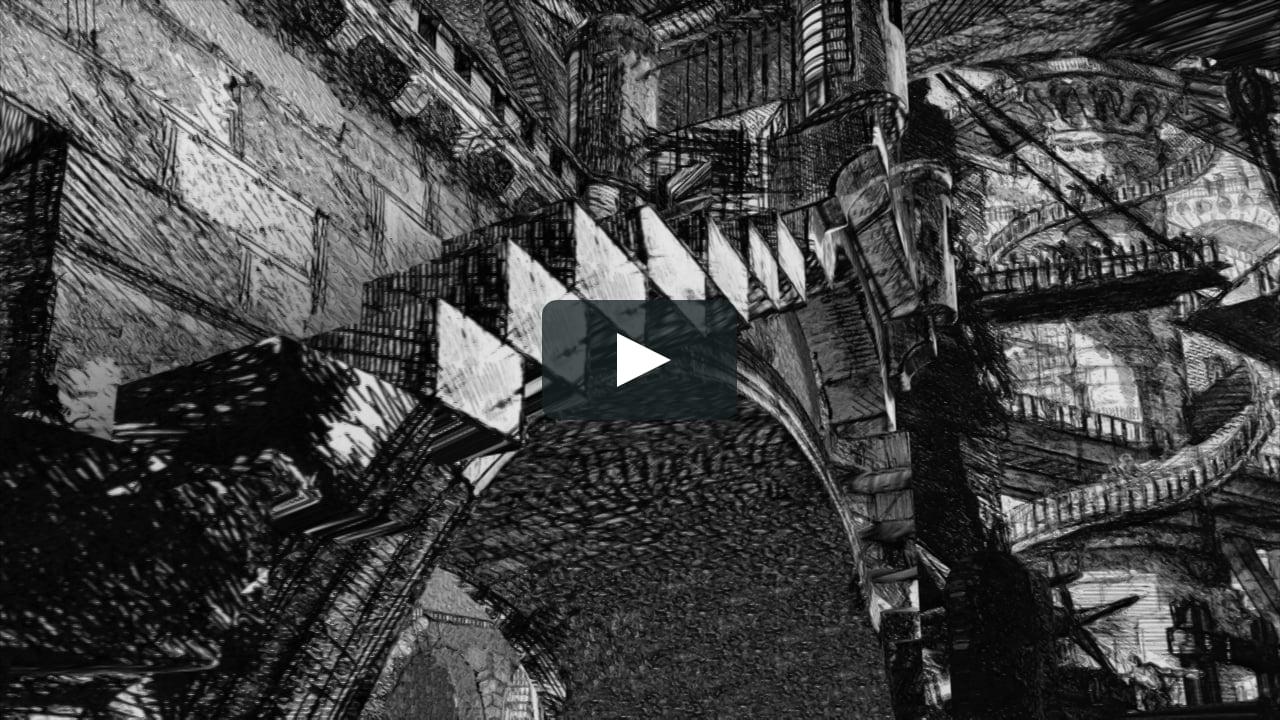

The statues in the walls of the Halls are capitalized too, such as an Angel caught on a Rose-bush, the Statue of a Gorilla, and the Horned Giants. The Halls are his inner world, because he remembers them, and thinks by navigating them, thinks by the poetic meaning found in the halls. His mind is less concerned with evaluating itself than understanding what is going on in the world around him-understanding, not in an abstract sense, but in experience. He can rattle off the numerics he’s given to the halls and vestibules, and he understands the movements of the water in such a way he can, almost perfectly, predict where they will crash or fall still. But Piranesi is unconcerned, and, as the story is collected from his personal journals, writes in his innocent, matter of fact voice: “He does not understand the Tides.” The House is as much a part of him as he is of the House. Given this has happened to the character in the past, I don’t blame him. He participates in the tides as much as they happen to him.Įarly in the story the Other is afraid that the tides will sweep him away. Like magic, the House is not only his outer, but his inner world. The Western Wall, the Statue of a Woman carrying a Beehive, the Biscuit-Box Man. But Piranesi is so close to nature-in this case, the nature of that strange land he calls the House-that these are his magics.

This is a common trope in Fantasy novels, to capitalize the names of another world’s magic. Words are capitalized that we would never capitalize ourselves. We are submerged in his innocent and ancient mind from the outset of the story, and it is jarring to our modern sensibilities. These are the reasons why I say that to read Piranesi is to taste myth. In Piranesi, the invasion is not in a Tolkienian sense of machinery and mechanism coming to dominate the countryside, but in a much more subtle, epistemological sense. But in Piranesi, the perspective is flipped, and we see from the point of view of the ancient the invasion of the modern. Most portal fantasies, like The Chronicles of Narnia, rely on the modern stumbling into the ancient. The Other is clearly manipulating Piranesi-what our protagonist is called, though it isn’t his name, and is an illusion to Giovanni Battista Piranesi, an Italian architect and artist who made prints of impossible and inescapable prisons-but Piranesi lacks an awareness of the manipulation, going so far as to praise the Other’s virtues! And when we realize that the Other has been using a smartphone? Not only is he using Piranesi, he is also hiding from him the reality of our modern day world. So old it touches the metaphysical.Īnd we’re in the head of a person so innocent it might be difficult for us to sympathize with his lack of awareness concerning the Other, the only other person we meet in the early chapters of the book.

This is a world so foreign to modern experience we might as well be walking the wood between the worlds. This is not otherworldly in a “space and aliens” sense. The setting is otherworldly, isn’t it? Those marble statues in the towering walls, the waves crashing over the floor, clouds among the ceiling vaults. Let’s begin with Clarke’s vision of primeval man wandering throughout the House. Lewis is not the most influential Inkling in this book (though there are plenty of intriguing references to Uncle Andrew) and I want to offer some insights into this more intimate connection between Clarke and the oft-forgotten Inkling, Owen Barfield. If you want to share in my experience, stop here. This is only one of many subtleties that blur the line between fiction and reality, most of which I will do my best to leave intact, because that night I began Piranesi I knew nothing about the story. Lewis’s The Magician’s Nephew, and the second seemingly from an obscure academic interview. Across the cover is an image of a faun playing a flute and dancing on a pillar above the waves. Published sixteen years after her first novel, her second can be read in one or two sittings.


 0 kommentar(er)
0 kommentar(er)
